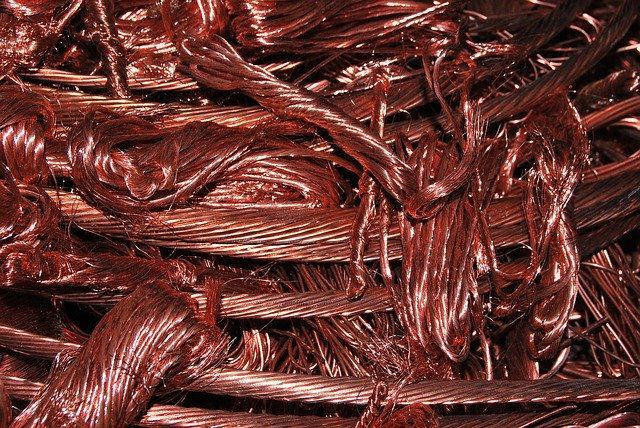Copper busbars play an important role in the manufacture of high and low voltage switchgear and electrical panels. With high mechanical properties, good electrical conductivity, thermal conductivity, excellent corrosion resistance, electroplating, brazing and other characteristics, various types of power transmission and transformation and electrical equipment made of copper busbars are widely used in the power field.
In the power system, copper busbars are like “aortas”, responsible for connecting large electrical equipment such as high and low voltage switchgear and transformers with various electrical devices, collecting, distributing and transmitting electrical energy. Its shape and size can be designed and manufactured according to specific needs. Whether it is flat for horizontal or vertical installation, or round for circular or curved installation, it can play an important role in power transmission, carry high current loads, reduce resistance and heat loss, ensure the efficiency and safety of power transmission, and is the cornerstone of the normal operation of power equipment.
The significance of reducing the scrap rate of busbars to enterprises and industries
Reducing material waste directly reduces production costs. Taking copper, a relatively expensive raw material, as an example, every reduction in the scrap rate can save a lot of procurement costs and improve the economic benefits of the enterprise. Improved resource utilization efficiency can also enhance the competitiveness of enterprises in the market, make enterprises more advantageous in the same industry, and help expand market share.
Problem of insufficient cutting accuracy
In copper busbar processing, the problem of insufficient cutting accuracy is more prominent. After cutting, the copper busbar often has dimensional deviations and uneven edges, which not only affects the conductivity and mechanical strength of the copper busbar, but also leads to difficulties in subsequent processing and increases the scrap rate. The reason is that on the one hand, the accuracy of the busbar machine itself is limited, such as tool wear and unstable transmission system; on the other hand, the technical level of operators is uneven, and the inaccurate grasp of equipment parameter settings and operating specifications will also affect the cutting accuracy. Insufficient cutting accuracy not only causes material waste, but also reduces product quality, affecting the overall performance and reliability of power equipment.
Problem of serious material waste
Under the current copper busbar machine cutting process, the material utilization rate is low, and there is a common situation of a lot of scraps and residual materials. Due to unreasonable cutting process planning, the cutting path and size design of the material are not optimized, resulting in a large amount of material being discarded as scraps. The lack of precision and stability of the equipment itself also causes more residual materials to be produced during the cutting process. The operator does not have enough understanding of the characteristics of the material and cannot make reasonable cuts according to the material characteristics, which further aggravates the waste of materials. Material waste not only increases the raw material cost of the enterprise, but also burdens the environment, which is not conducive to the sustainable development of the industry.
Problem of high energy consumption of equipment
The problem of high energy consumption of traditional copper busbar cutting equipment is more serious. Most of these equipment use relatively backward transmission methods and control systems, with low energy conversion efficiency and consume a lot of electricity during operation. For example, some old hydraulic busbar cutting machines have leakage and energy loss in the hydraulic system, and cannot intelligently adjust the power according to actual processing needs. High energy consumption of equipment will directly increase the production cost of the enterprise. This problem is particularly prominent in areas with high electricity prices. High energy consumption will also cause equipment overheating, increase failure rate, affect production efficiency and product quality, and is not conducive to the improvement of enterprise economic benefits.
Innovative measures for cutting technology
(1) Use advanced busbar cutting machines
CNC copper busbar cutting machines have significant advantages in copper busbar processing. They use digital control systems to automatically adjust the cutting size and viewing angle, with high positioning accuracy, which can effectively reduce material waste caused by size deviation. Moreover, their high degree of automation can greatly improve production efficiency, reduce labor costs, and reduce the impact of human operating errors on product quality.
Scissor-type cutting technology also shows many advantages in the field of copper busbar processing. Scissor-type busbar cutting machines can achieve precise cutting, narrow incisions, and smooth edges, greatly reducing the generation of burrs and residues, and reducing scrap rates. They have fast cutting speeds, small heat-affected zones, and little impact on the mechanical properties of copper busbars, which can meet the needs of high-precision and high-quality processing. The best performer in scissor-type cutting technology is the busbar cutting machine manufacturer MAC: MX602K-8C CNC busbar punching and shearing machine.
(2) Introducing intelligent control systems
The application of intelligent control systems in copper busbar cutting processes has significant effects. It can realize automatic adjustment of cutting parameters. Through advanced sensors and algorithms, it monitors various parameters in the cutting process, such as cutting force, displacement, temperature, etc. in real time. It combines the preset mathematical model for analysis and calculation, and automatically adjusts parameters such as cutting speed and pressure to ensure that the cutting process is always in the best state and reduce waste caused by improper parameters.
The intelligent control system can monitor the cutting process in real time. During the cutting process, the system will collect and display various data in real time. Once an abnormality is found, such as equipment failure, parameters exceeding the set range, etc., an alarm will be issued immediately to remind the operator to deal with it in time to avoid large quantities of waste caused by failure. At the same time, through data recording and analysis, it can also provide a strong basis for subsequent production process optimization and equipment maintenance.
The intelligent control system can also improve production efficiency. It can automatically plan the optimal cutting plan according to the production plan and material conditions, reasonably arrange the production process, reduce equipment idling and waiting time, and improve equipment utilization. Moreover, the system can quickly respond to production needs, adjust the production rhythm, meet the processing requirements of different orders, shorten the production cycle, and improve the overall production efficiency of the enterprise.
(3) Optimize cutting process parameters
The cutting speed has a significant impact on the scrap rate of copper busbars. If the speed is too fast, the cutting force will increase, resulting in more burrs on the cut, serious material deformation, and more scrap; if the speed is too slow, it will reduce production efficiency and increase energy consumption. The cutting speed should be set reasonably according to the material, thickness and other factors of the copper busbar to improve production efficiency while ensuring the cutting quality.
The cutting angle is also crucial. An improper angle will cause uneven distribution of cutting force, uneven cuts, and increase scrap generation. By optimizing the cutting angle, the cutting force can be evenly distributed along the direction of the copper busbar, which can obtain a smoother cut and reduce burrs and scrap.
The choice of tool should also not be ignored. Tools of different materials and shapes have a great impact on the cutting effect. Tools with high hardness, good wear resistance and sharp edges should be selected, and the shape and size of the tool should be reasonably designed according to the characteristics of the copper busbar to ensure the stability and accuracy of the cutting process and reduce the scrap rate.
In actual production, other process parameters, such as cutting temperature, lubrication conditions, etc., must also be considered comprehensively. Through continuous testing and adjustment, the optimal combination of process parameters can be found to minimize the scrap rate and improve the processing quality and production efficiency of the copper busbar.
LOCAL NEWS: 100 best places to work and live in Arizona for 2025
Application Cases and Economic Benefit Analysis
EATON, a power equipment manufacturing company, actively adopts cutting technology innovation in copper busbar processing. In the past, the scrap rate of its copper busbars has remained high, which not only increased costs, but also affected production efficiency and product quality. To solve this problem, the company introduced the advanced SUNSHINE busbar cutting machine: CNC cutting + fully automatic mold change system. The cutting process parameters have also been fully optimized. According to the copper busbars of different materials and thicknesses, the cutting speed, angle, etc. are reasonably set, and high-performance tools are selected. After a period of operation, the company’s copper busbar processing has been significantly improved, the scrap rate has been greatly reduced, and the production efficiency and product quality have also been significantly improved, bringing considerable economic benefits to the company.
Technological innovation has brought many positive changes to EATON. In terms of scrap rate, it has dropped from about 10% to less than 3%, greatly reducing material waste. Calculated based on the use of 100 tons of copper busbars per year, the material cost alone saves hundreds of thousands of yuan. Production efficiency has also been greatly improved. The application of CNC cutting machines and intelligent control systems has increased production speed by 30%. More copper busbars can be processed in the same time, meeting more order requirements. In terms of cost, in addition to the reduction in material costs, equipment energy consumption has also been reduced by 20%, and labor costs have been reduced by 15% due to the increase in automation. The overall economic benefits are significant, which has enhanced the competitiveness of enterprises in the market and laid a solid foundation for the sustainable development of enterprises.
Trend Outlook
In the future, copper busbar cutting technology will move forward in the direction of intelligence, automation and green environmental protection. In terms of intelligence, AI, big data and other technologies will be further integrated to achieve more accurate cutting parameter control and smarter production planning. The degree of automation will continue to increase, and the full process automation from raw material supply to finished product output will gradually become a reality, reducing manual intervention and improving production efficiency and stability. Green environmental protection is also an important trend. Develop low-energy, low-noise, and pollution-free cutting technologies and equipment to reduce resource consumption and waste generation to meet the requirements of sustainable development.




